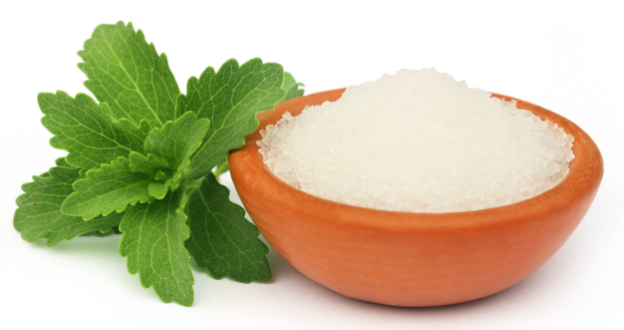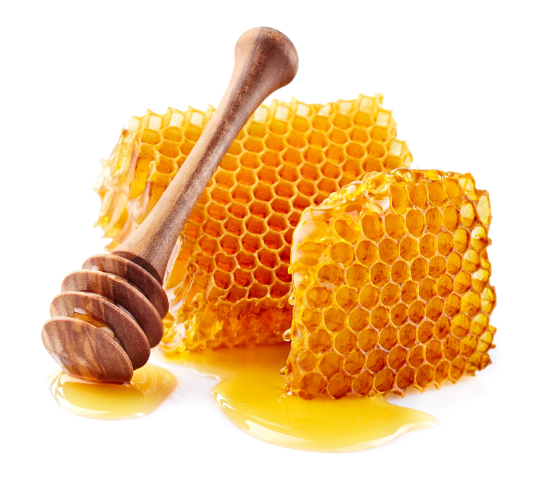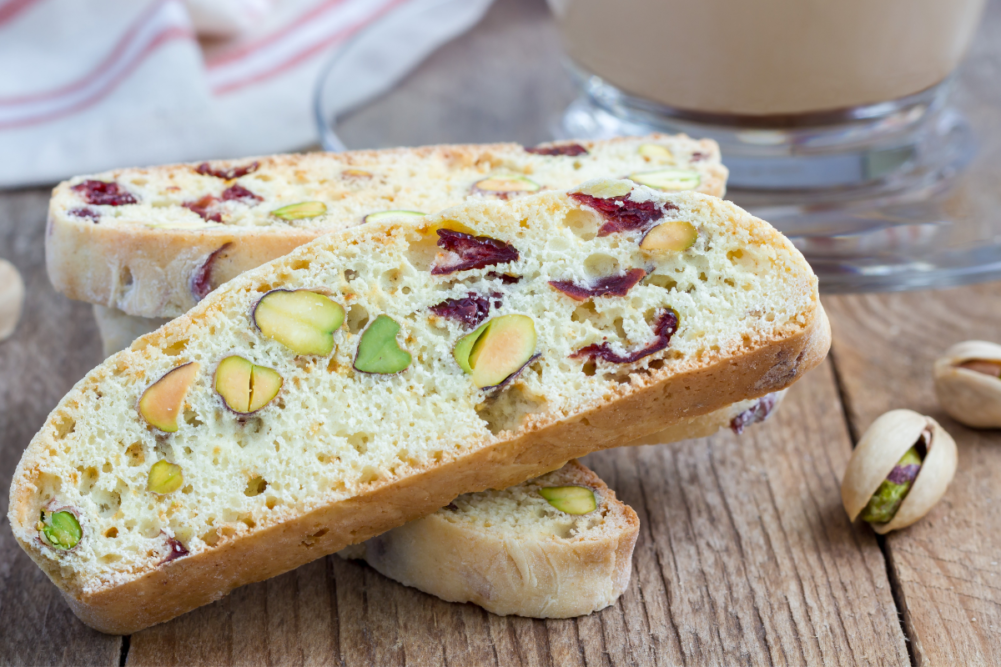CHICAGO — While sugar is one of the simplest pantry ingredients — it’s obtained from sugarcane or sugar beets through just a few steps (extraction, evaporation and drying) — it happens to be one of the most controversial. The medical community and wellness advocates have urged the public to stay away from it, but some of the most popular baked goods contain concentrated amounts, making them delicious and craveable. It’s no wonder the sweetener community remains active in identifying systems to assist with reducing sugar in several baked foods, including cookies, cakes, bars and muffins.
“Over the last decade there have been calls to reduce the amount of sugar in our diet as a growing number of chronic conditions can be linked to excessive consumption,” said Kishan Vasani, co-founder and chief operating officer of Spoonshot, a food and beverage innovation company that leverages artificial intelligence and food science. “This has resulted in the evolution of an entire industry searching for new solutions to replace or reduce sugar.”
ADM Outside Voice research showed that eight out of 10 consumers are actively trying to reduce sugar in their diets. Of those eight consumers, 79% find sugar reduction is important in bars and snacks. Seventy percent find it important in baked goods.
“Shoppers may further scrutinize product labels on store-bought baked goods as they are also likely baking these same offerings at home,” said Sarah Diedrich, marketing director-sweetening solutions and fibers, ADM. “In fact, 53% of consumers are reviewing the type of sweetener used for baked goods. If an ingredient can’t be found in the home kitchen or pantry, it can be a sign of processing or compromise to consumers. This raises the bar for included sweeteners, which need to be either familiar or justified for use in certain products to be fully accepted.”
Overcoming hurdles
When reducing or replacing sugar, bakers face a number of challenges, as sugar not only provides sweet taste and functions as a flavor carrier, it also contributes to mouthfeel, texture and appearance — think Maillard browning. In yeast-leavened baked goods, sugar may also help manage fermentation. And bakers appreciate sugar’s humectant properties to assist with extending product shelf life.
“There are so many functions beyond sugar being sweet,” said Eleonora Lahud, corporate chef, ASG Group. “That’s why sugar cannot be replaced with just one ingredient.”
Spoonshot's analysis of social media conversations about natural sweeteners found stevia to be the most talked about ingredient, appearing in 39% of conversations.
Re-formulating for sugar reduction requires thinking beyond just taste but all the ways sugar contributes to the finished product.
“We approach each sugar reduction formulation with the same three goals in mind: replace sweetness, rebalance flavor and rebuild functionality,” said Hanna Santoro, senior scientist-baking development and applications, ADM. “Each element is important to keeping the best sensory attributes in reduced-sugar baked goods.”
Another reason why bakers like sugar is that it is inexpensive and readily available. Removing some or all of it from a batter or dough impacts manufacturing costs. However, on the positive side, sugar reduction may be good for the environment, as sugarcane and sugar beets are thirsty crops.
“Sugar crops are increasingly becoming unviable in an era when environmental and climate issues are at the forefront of everyone’s minds,” said Mr. Vasani. “Sustainability has stopped being a nice-to-have buzzword and is increasingly becoming an important measurable metric for consumers. Not surprisingly more and more companies across the food and drink sectors are pledging to go carbon neutral or even carbon negative. That, along with consumer demand for healthier foods, is giving sugar alternatives a real leg up in promoting companies’ sustainability credentials by reducing their carbon footprints.”
Stevia leads the way
Spoonshot’s analysis of social media conversations about natural sweeteners found stevia to be the most talked about ingredient, appearing in 39% of consumer conversations. Perception of stevia was analyzed.
“In consumer conversations about stevia, 24% talked about its low-calorie feature, 23% highlighted its gluten-free nature and 18% of conversations were associated with its keto compliant feature,” said Ranjana Sundaresan, lead research analyst, Spoonshot. “Interestingly, only 15% of conversations were about stevia’s natural credentials. In 7% of conversations, organic was an important feature in connection with stevia.”
Stevia leaves contain dozens of sweet components; however, two of the best-tasting, Reb M and Reb D, comprise less than 1% of the stevia leaf. Fermentation can provide a sustainable way to obtain Reb M and Reb D glycosides using fermentation. This process uses less water, less land and has a smaller carbon footprint, according to the recently completed Life Cycle Analysis (LCA) of the technology.
“We knew our approach offered tangible environmental benefits,” said Andrew Ohmes, global product line manager for high-intensity sweeteners, Cargill. “Now, with the completion of our LCA, we can quantify this sustainability edge.”
Other players in the stevia space have invested in technologies to differentiate.
“We’ve developed a novel approach for extraction and purification of our proprietary plant-based stevia, ultimately leading to a better-performing sweetening solution with qualities that appeal to both product developers and consumers,” Ms. Diedrich said. “For the best-quality flavor to mitigate the need for maskers and allow for easier formulation, we target the stevia leaf extract. Our proprietary technology extracts and purifies the stevia leaf to maximize the glycosides for superior taste, delivering 15% more sweetness than other steviol glycosides and minimizing undesirable attributes such as bitterness and astringency.”
 ADM uses the rest of its ingredient portfolio to round out sugar’s functionality beyond taste.
ADM uses the rest of its ingredient portfolio to round out sugar’s functionality beyond taste.
“For example, we combine our proprietary stevia and reduced sugar glucose syrup (RSGS) to provide structural integrity and improve overall mouthfeel while also maintaining flavor and sweetness,” Ms. Santoro said. “Our soluble dietary fiber solutions also work exceptionally well with our stevia for bulking and binding as well as added nutritional benefits. Additionally, if formulators are seeking out high sugar-reduction targets, using our proprietary stevia and RSGS together helps achieve a decrease in sugars by more than 30%.”
Ingredion’s PureCircle portfolio of stevia ingredients provide a clean, sweet taste that mimics sugar’s flavor but also specific bakery flavors such as fruit or spice.
“The ingredients are derived from the stevia leaf in the forms of extracts or bio-converted steviol glycosides and can be labeled as stevia leaf extract, stevia leaf sweetener or natural flavor when used at specified levels,” said Eric Shinsato, senior project leader, technical service and innovation, Ingredion Inc.
Nascent Health Sciences markets high-purity single glycoside stevia leaf extracts and a curated collection of mixed glycosides. To assist bakers with sugar reduction, the company’s ingredient portfolio includes other functional additives.
“Our Reb M is sourced naturally using stevia plants that we grow and harvest using only the most natural processing method possible — extraction and purification,” said Hank Wang, technical director, Nascent Health Sciences. “Reb M is a newer steviol glycoside that has gained in popularity as an alternative to the more common glycoside Reb A. Many prefer Reb M as it doesn’t have the bitterness and other off notes that can come with higher use levels of Reb A.”
Tate & Lyle’s proprietary blend of steviol glycosides works well at mid-level sugar reduction levels in bakery applications. It may be used alone or in combination with the company’s monk fruit extract to balance sweetness. The company’s soluble corn fiber provides bulk and nutrition. The company also offers a natural flavor to help balance sweetness and taste.
“For higher sugar reduction levels in the bakery segment, our recent launch of premium Reb M and Reb D provides taste profiles at a cost-competitive and sustainable price point,” said David Nichols, category development and planning manager, Tate & Lyle.
Nascent is introducing a new line of proprietary sweetener blends that are designed as pound for-pound, one-tone healthy substitutes for cane sugar. These blends can be applied as an easy drop-in solution, or they can be customized to achieve desired product profiles, such as clean label, low calories, higher nutrition values and fair prices. The blends are non-GMO and organic compliant. They can also be certified organic.
“Our new line of proprietary sweeteners provides the same level of sweetness as cane sugar with a similar intensity curve,” said Michael Chen, managing director, Nascent. “The inclusion of rare sugars like allulose and/ or tagatose allows these sweeteners to replicate and replace the texture and mouthfeel of sugar in baked goods.”
These sweeteners also brown and spread similarly to sugar when baked, according to Mr. Wang.
“This is a key property that differentiates them from more traditional solutions of using erythritol or other sugar alcohols,” he said. “They are label-friendly and contain levels of soluble fibers that consumers desire.”
Premium natural high-intensity sweeteners, such as Reb M and monk fruit, may appear costly; however, because they are as much as 300 times as sweet as cane sugar, their cost-in-use improves their economics. Bulking agent, flavors and masking agents may cause prices to creep up.
“It can be difficult to foresee the various effects that processing, ingredient selection and other elements of formulating will have on an end product,” said Corie Beyers, strategic marketing manager, food systems, Ingredion. “We work with our customers to help guide their formulation process, taking into consideration the various factors necessary to ensure a stable, reproducible product. When developers are able to understand how each component interacts and impacts the product as a whole, the process becomes much more effective and efficient.
“Today’s consumers are altering their consumption habits and product preferences at a rapid pace,” Ms. Beyers said. “Taking a systems approach to product development accelerates the process, enabling our customers to respond to the market. This includes developing new products and reformulating existing favorites to improve consumer appeal.”
With the supplier support, bakers can leverage the way all of these ingredients can work together to promote taste and functionality while also reducing sugar.
“Synergies between sweeteners can be leveraged to achieve a clean, sweet taste,” said Sue Butler, technical category manager for nutrition-bakery and confectionery, Tate & Lyle. “Soluble fibers can be good humectants and help to maintain a nice, soft texture. The incorporation of other mono and di-saccharides can help to provide that nice soft desirable texture.”
New and novel sweeteners
In addition to stevia, there’s a growing toolbox of natural sweeteners now available to bakers. Some are noncaloric replacements for sugar. Others are viewed as more label-friendly and sustainable crops. Pure, single origin, organic coconut nectar is one such example.
“Coconut nectar is a millennium-old ‘new’ ingredient,” said Paul Whitman, fruit and vegetable specialties category manager, Global Organics Ltd. “Our supplier in Java, Indonesia, uses a traditional harvesting method: wrapping the coconut blossoms in palm leaves to prevent full blossoming. Twice daily, climbers carefully scale to the very top of the tree, expertly cut razor thin slices from the coconut flowers, to start the sap flowing and collect 2 to 5 liters per day. The sap is evaporated and concentrated to a syrup. If the sap was fully evaporated, you would have produced coconut sugar.”
In addition to stevia, there's a growing toolbox of natural sweeteners now available to bakers.
Minimal processing retains phytonutrients and essential minerals, such as small amounts of iron, zinc, calcium and potassium, along with amino acids and broad-spectrum B vitamins. Coconut nectar has a lowglycemic index and is naturally gluten free and suitable for a paleo diet.
“Organic coconut nectar can be used as a one-to-one replacement for liquid sweeteners,” said Mr. Whitman. “It sweetens, binds, adds texture, browns and extends shelf life. It has a caramelized, syrupy, brown sugar flavor, with distinct floral notes and tastes similar to molasses but without the bitter aftertaste.
“The floral note is really unique in sweeteners,” he continued. “We think it would enhance the fig flavor in fig bars and accent the apricot, raspberries, golden raisins and other ‘bright’ fruits in energy bars and granola. If you’re using a dark chocolate drizzle on bars or cakes, the floral note would highlight the fruity flavor of dark chocolate.”
Although honey has been around for thousands of years, it is being used more as demands from consumers put all-natural sweeteners in the spotlight. The increased popularity of honey has spurred innovation in the industry, including the use of more mono-floral honey varietals and dried honey. Dried honey is made by dehydrating liquid honey, and in some cases adding processing aids to prevent caking and make it more flowable.
“Monofloral honeys give bakers the ability to craft unique and specific flavor profiles based solely on the type of honey used,” said Catherine Barry, director of marketing, National Honey Board. “We find this works exceptionally well in products such as granolas, where a manufacturer can use buckwheat honey in a base granola formula to impart a robust, earthy flavor and dark color. With the same base formula, they can use an orange blossom honey for a lighter-in-appearance-and flavor product with a hint of citrus.”
Honey may seem simple on the surface, but it is a complex substance with more than 180 components, including antioxidants, minerals, prebiotics and vitamins, as well as a host of carbohydrates and acids that give honey its complex flavor profile.
 Monk fruit juice concentrate is gaining traction in baked goods. Adallen Nutrition is rolling out an organic option.
Monk fruit juice concentrate is gaining traction in baked goods. Adallen Nutrition is rolling out an organic option.
“The liquid is about 15 to 18 times sweeter than sugar and is a pale-yellow liquid that is ideal for baked goods for its sweetness level as well as enhancing binding capabilities in bars and cookies,” said Malcolm Greenberg, vice president of sales. “We also offer a monk fruit/erythritol blend that is as close as one can find as a true 1:1 sugar replacement that is zero net carbs, has no calories and functions almost identically to sugar.”
Isomaltulose and isomalt are unique functional carbohydrates that can be used in a variety of baked good products for sugar replacement or reduction. Derived from sucrose, these ingredients deliver a very mild natural taste in addition to being non-cariogenic.
“Our isomaltulose is non-GMO and a fully, yet slowly digestible and low-glycemic carbohydrate,” said Kyle Krause, product manager, functional fiber and carbohydrates, BENEO. “It is slowly released in the body, providing energy in a balanced and sustained way with less blood glucose fluctuation and steadier insulin release, resulting in improved metabolism.
“Isomalt is the only sugar replacer derived from pure beet sugar and has a natural taste and rounded sweetness profile as well as being non-cariogenic,” Mr. Krause said. “As isomalt has only half the calories of sugar, it is increasingly being used in baked goods as a solution to reduce or replace sugars. It is particularly suitable for cookies because of its low hygroscopicity, which helps keep them crispy, particularly in more humid climates.”
With the growing number of sweetener options and bulking agents available, bakers can find creative solutions to reducing sugars without compromising on taste and quality.





